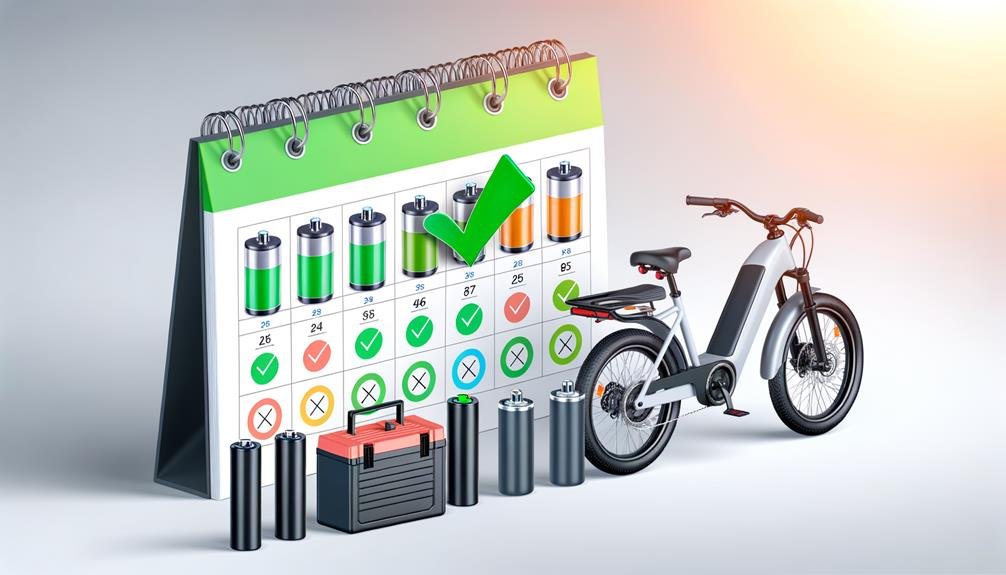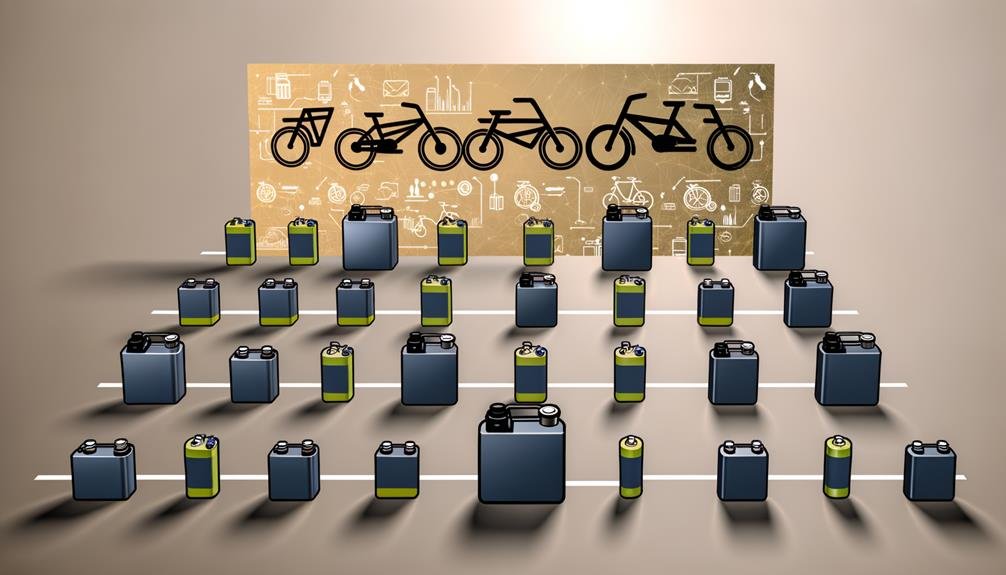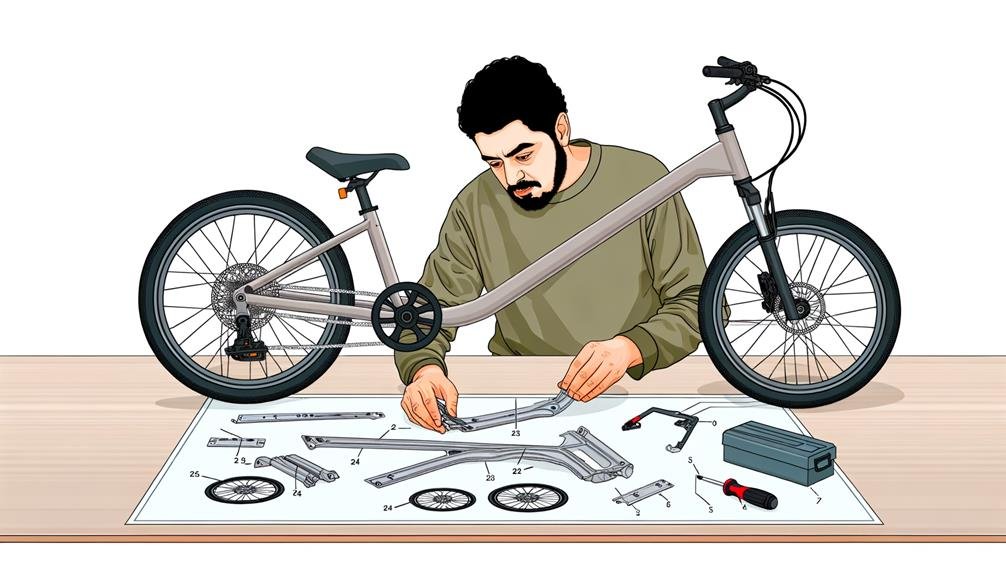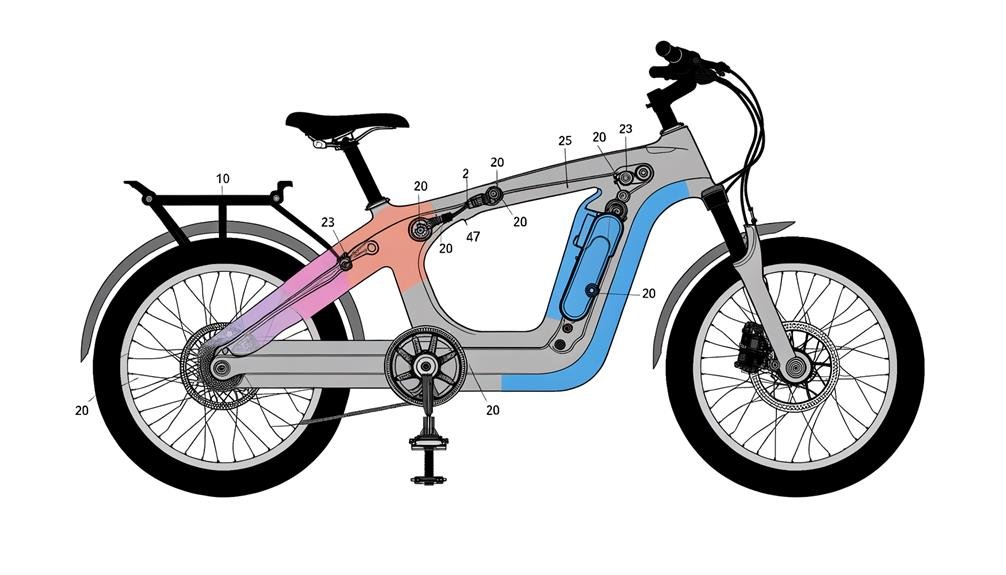Charles Miller is a veteran bike enthusiast with over 12 years of experience dealing with bikes as a mechanic. Despite immense love and expertise for...
While some might argue that all e-bike batteries are created equal, we're here to tell you that's simply not the case. There's a world of difference in performance, lifespan, and overall efficiency that hinges on the type of battery powering your electric bike.
From lithium-ion to sealed lead-acid batteries, each comes with its own unique set of advantages and drawbacks. It's about understanding what suits your specific needs and riding conditions.
So, let's navigate this maze of battery options together and find out which one could potentially elevate your e-biking experience to the next level.
Key Takeaways
- E-bike batteries are typically made up of individual cells in the 18650 form-factor, with the overall quality of the battery pack determined by the quality of its weakest cell.
- Lithium-ion (li-ion) batteries, manufactured by reputable companies like Panasonic, LG, and Samsung, are commonly used in electric bikes and offer varied specific energy, specific power, and safety metrics.
- Factors to consider when selecting a cell chemistry include specific energy, specific power, and safety metrics, as well as the balance between Volts, Amps, and Watts.
- Lifespan and maintenance tips for e-bike batteries include avoiding charging to 100% unless necessary, using a reputable charger, storing the battery correctly, and adhering to manufacturer's guidelines for maintenance and storage.
Understanding E-Bike Battery Types
To fully grasp the nuances of e-bike battery types, we need to understand that these batteries are made up of individual cells, usually in the 18650 form-factor, and the overall quality of the battery pack is determined by the quality of its weakest cell. This is a key aspect of understanding e-bike battery types.
The electric bike batteries we come across are typically lithium-ion (li-ion), manufactured by reputable companies like Panasonic, LG, and Samsung. When selecting a cell chemistry, it's essential to consider factors such as specific energy, specific power, and safety metrics.
We also measure the range of a battery pack in watt-hours (Wh), which is calculated by multiplying the battery capacity (in amp-hours) by the battery voltage (in volts). Bear in mind, the estimated range can be influenced by factors like rider weight, temperature, and pedaling.
To maximize the lifespan of your e-bike battery, we suggest not charging the battery to 100% unless necessary, using a reputable charger specifically designed for e-bike batteries, and avoiding discharging the battery to extremely low voltages. With this knowledge, you're well on your way to becoming an e-bike battery connoisseur.
Power and Performance Comparison
When it comes to power and performance, different battery chemistries like lithium-ion (li-ion) and lithium iron phosphate (LiFePO4) offer varied specific energy, specific power, and safety metrics, crucially impacting an e-bike's performance. These e-bike batteries are the heart of our ride and the choice between them isn't trivial.
The best e-bike battery not only boosts performance but also ensures safety. In our power and performance comparison, we consider several aspects:
- The specific energy and power offered by different battery chemistries, with Li-ion and LiFePO4 being the top contenders.
- The reliable cell manufacturers like Panasonic, LG, and Samsung, known for their quality and consistency.
- The balance between Volts, Amps, and Watts, as higher volts may lead to greater speed, but more amps could necessitate larger battery packs.
Watt Hours (Wh) also play a key role in determining the usable energy in a battery pack. Remember, a higher Wh rating translates to improved e-bike performance. Additionally, the relation between motor power and battery size is crucial. Larger motors may require larger batteries for sustained performance.
As we delve deeper, we'll discover what makes the best e-bike battery for us.
Lifespan and Maintenance Tips

Understanding the lifespan of an e-bike's battery and applying appropriate maintenance techniques can significantly impact its longevity and performance. Environmental conditions, charging rate, and voltage, as well as depth of discharge, all crucially influence the battery's lifespan.
Over time, batteries decay even in a charged state, and leaving one at full charge for an extended period can diminish its capacity.
To make it last, it's vital to care for your battery meticulously. This includes avoiding a 100% charge, using a reputable charger, and preventing discharge to extremely low voltages. Regular use and maintenance are pivotal in prolonging the battery lifespan and maintenance tips include storing the battery in a cool, dry place, avoiding extreme temperatures, and regular cleaning of battery contacts.
Adhering to the manufacturer's guidelines for maintenance and storage not only ensures the battery's optimal performance but also extends its lifespan. Remember, how you care for your battery significantly influences how long it will serve you. Therefore, be proactive in maintaining your e-bike battery, not just for its longevity but also for your bike's optimal performance.
Charging Practices for Longevity
Optimizing the longevity of your e-bike's battery largely hinges on your charging practices. This is an essential aspect to consider when you're part of the electric bike community, as the battery is the lifeblood of your ride.
To ensure the maximum lifespan of your battery, we've laid out several technical, but crucial charging practices for longevity.
- Avoid charging your battery to 100% unless absolutely necessary.
- Aim to charge the battery to around 80% whenever possible.
- Shun extremely low discharges and high charging rates, as they can severely impact the battery's longevity.
These practices may seem meticulous, but they're pivotal in preserving your e-bike's battery life.
Also, remember to use a reliable charger specifically designed for your e-bike's battery. This ensures that you're not only charging your battery correctly but also prolonging its life.
Top E-Bike Battery Brands

Diving into the realm of top e-bike battery brands, it's paramount to highlight reputable cell manufacturers such as Panasonic, LG, and Samsung, renowned for their high-quality battery cells. These industry giants have made significant contributions to the e-bike industry, specifically in the creation of lithium-ion batteries, hailed for their superior specific energy, power, and safety characteristics.
E-bike enthusiasts seeking reliable battery packs should consider options from brands such as 36V 12.8Ah Bottle LG, 36V 13Ah Dolphin LG, and 52V 19.2AH Rear Rack LG. These brands stand out in the market, offering high-performing, durable batteries that ensure you get the most out of your e-bike.
Furthermore, suppliers like Bicycle Motor Works, Falcon EV, and Luna have carved a niche in the industry, providing custom packs with high capacities and powerful Battery Management Systems (BMS). These suppliers are trusted by us and many in the e-bike community.
Selecting the right battery pack for your needs and conversion kit is crucial. We recommend investing in a decent lithium-ion or LiFePO4 battery for longevity and performance. By choosing from the top e-bike battery brands, you're ensuring a smooth, powerful, and long-lasting ride.
Frequently Asked Questions
What Kind of Battery Is Best for Ebike?
We'd recommend lithium-ion batteries for e-bikes. They've got the longest lifespan, fastest charging speed, and come with robust safety measures. However, consider your bike's specific needs before making a final decision.
Which Ebike Has the Longest Lasting Battery?
We're examining which e-bike has the longest-lasting battery. This hinges on battery lifespan, charging methods, and maintenance. It's not just about the battery type, but how it's cared for and charged that truly matters.
Can I Put a Stronger Battery in My Ebike?
We can definitely put a stronger battery in our eBike, considering battery compatibility and upgrade implications. It can improve power efficiency, but we must ensure the bike's system can handle the increased power.
Which Battery Is Best for Bike?
We're big fans of lithium-ion batteries for bikes due to their longevity, efficient charging, and cost-effectiveness. Quality cells from reputable manufacturers like Panasonic, LG, and Samsung usually offer the best performance.
Conclusion
In conclusion, choosing the right battery can significantly enhance your e-bike experience.
Surprisingly, a quality lithium-ion battery pack from manufacturers like Panasonic, LG, or Samsung can offer over 800 full charge cycles if maintained and charged correctly.
This translates to several years of efficient use.
Therefore, investing in a superior battery pack and practicing good maintenance habits can be a game-changer for your e-bike performance and longevity.

Charles Miller is a veteran bike enthusiast with over 12 years of experience dealing with bikes as a mechanic. Despite immense love and expertise for his Tacoma, he rides his Trek Ebike more. Anytime you meet him, you’ll either hear him talking about Bikes, or writing about all things bikes and cars on this blog.
More Posts


